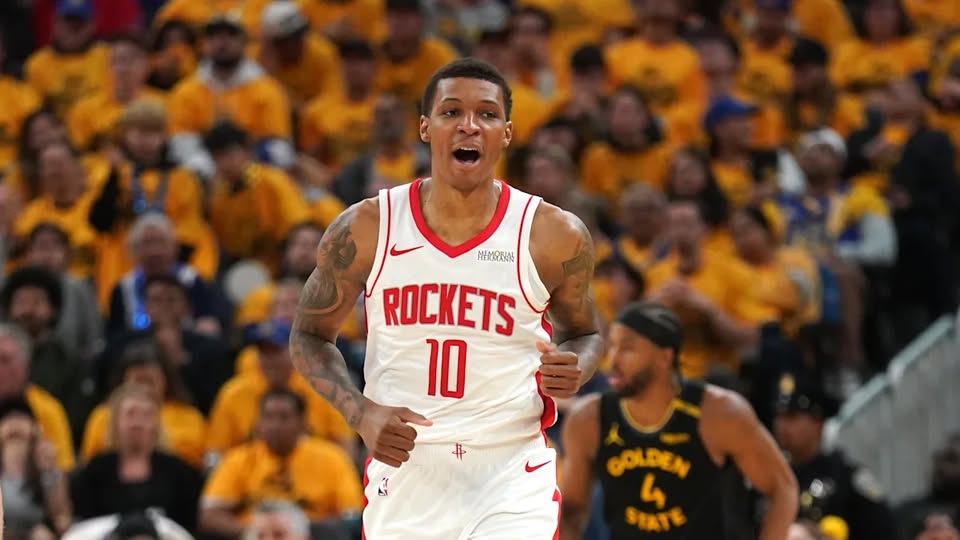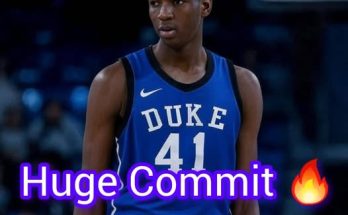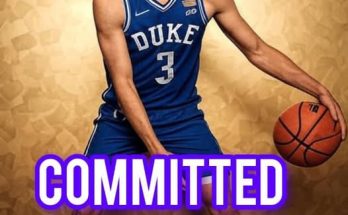Penn State’s football program has experienced a stinging blow to its 2026 recruiting class. In a surprising and high-stakes recruiting flip, a highly-touted quarterback — considered the centerpiece of the Nittany Lions’ offensive future — has decommitted and pledged his allegiance to the Auburn Tigers. The move not only reshapes the immediate outlook for both programs but also raises serious questions about Penn State’s ability to attract and retain top offensive talent in the evolving NIL-fueled college football landscape.
This unexpected shift sends ripples through Happy Valley as Head Coach James Franklin and his staff are left scrambling to reassess their quarterback depth chart and recruiting roadmap. Meanwhile, Auburn’s coaching staff, led by Hugh Freeze, scores a massive win — a clear signal that the Tigers are ascending in the competitive Southeastern Conference (SEC) under Freeze’s aggressive recruitment strategy.
Let’s unpack what this quarterback flip means for Penn State, how it strengthens Auburn, and why the Nittany Lions may now face increased pressure across multiple fronts, from offensive cohesion to long-term stability.
The Quarterback in Question: A Game-Changer Lost
The quarterback at the center of this seismic shift is 2026 four-star signal caller Malik Washington, a dynamic 6-foot-3, 210-pound talent ranked among the top 10 quarterbacks in his class nationally. Hailing from the DMV region, a traditionally fertile recruiting ground for Penn State, Washington was seen as the next great dual-threat in blue and white. He committed to the Nittany Lions in early 2024 and had long been vocal about his fit in Penn State’s evolving offensive scheme.
However, recent changes within the program — including persistent questions surrounding offensive coordinator Andy Kotelnicki’s system and the uncertain future of the quarterback room — may have opened the door for Auburn to swoop in. Washington officially announced his flip to the Tigers on social media, citing “a vision and connection that aligns perfectly with my development and goals.”
For Penn State, the sting is particularly sharp because Washington wasn’t just another blue-chip recruit; he was viewed as a cultural leader in the class, a player who could attract elite wide receivers and stabilize the quarterback position in the post-Drew Allar era.
Fallout for Penn State: Depth and Recruitment in Jeopardy
Losing Washington exposes immediate cracks in Penn State’s future quarterback depth and reignites concerns over the program’s ability to build and maintain offensive momentum in a Big Ten conference that is getting deeper and more competitive, especially with the additions of Oregon, USC, UCLA, and Washington.
1. Thin QB Depth Chart Beyond 2025
Drew Allar, a former five-star recruit, is expected to enter the NFL Draft after the 2025 season. Backup Beau Pribula, a more mobile option, is solid but may not offer the long-term ceiling of Allar. Beyond that, the cupboard is alarmingly bare. With Washington’s departure, the 2026 quarterback class currently lacks a headline recruit, forcing the Nittany Lions to either hit the reset button or aggressively pursue a transfer next cycle.
2. Impact on Offensive Recruiting
Washington’s decommitment could ripple through the rest of the 2026 class. Several wide receiver targets, including top-100 talents like Bryson Harmon and Tyree Owens, had publicly expressed interest in Penn State because of Washington’s presence. Without a marquee quarterback to throw them the ball, Penn State could lose ground in recruiting battles that already involve SEC and Big Ten heavyweights.
3. Coordinator Concerns
Andy Kotelnicki’s tenure as offensive coordinator has not been without criticism. Known for his creative schemes at Kansas, he was brought in to elevate Penn State’s offense. But a lack of explosive plays, combined with inconsistent quarterback development, has drawn skepticism. Washington’s flip could be seen as a referendum on Kotelnicki’s ability to recruit and retain elite offensive talent.
Auburn’s Gain: Hugh Freeze Strikes Gold
While Penn State reels from the loss, Auburn is celebrating a massive win. The addition of Malik Washington is another sign that Hugh Freeze is building something real on the Plains — and fast. Freeze has aggressively targeted quarterbacks who can execute his uptempo, RPO-heavy offense, and Washington fits that mold perfectly.
1. Building for the Future
The Tigers’ quarterback room already includes Holden Geriner, Walker White, and Hank Brown, but Washington brings something different — a proven dual-threat capability, elite football IQ, and leadership qualities that resonate in the locker room. He’s a developmental QB who could eventually become a multi-year starter or push existing talent early.
2. Freeze’s Recruiting Statement
With Washington’s flip, Auburn continues to chip away at its image as a program playing second fiddle in the SEC West. Over the past two cycles, the Tigers have flipped or landed recruits from the likes of Georgia, Alabama, and now Penn State. That’s a significant shift, and it sends a message: Auburn is not afraid to battle for top talent on a national scale.
3. Recruiting Momentum
This latest addition bolsters Auburn’s 2026 class, now ranked No. 4 nationally by 247Sports. Washington becomes the cornerstone of the class and a magnet for offensive talent — particularly skill position players looking to showcase themselves in a pro-style system that also allows for creativity and improvisation.
NIL Implications: A New Era of Flips and Flexibility
Sources close to both programs suggest that NIL deals may have played a role in Washington’s flip. While neither school has officially commented on any financial packages, the reality is undeniable: Name, Image, and Likeness (NIL) is changing the recruiting landscape — especially at quarterback, where players can command top-dollar value.
Auburn has invested heavily in its NIL collective, and this flip shows that the financial infrastructure is in place to not only retain players but to poach them. Penn State, meanwhile, has faced internal criticism for being slow to adjust to the NIL era. Washington’s departure may be a wake-up call for administrators, boosters, and alumni who want the program to remain nationally competitive.
Looking Ahead: Penn State’s Response
Now that Washington is off the board, what can Penn State do to recover?
1. Re-Target the 2026 Class
The staff will likely turn their attention to other quarterbacks in the 2026 class. Names like Carson Peters (California), Jamal Bryant (Texas), and Zeke Robinson (Georgia) could see renewed interest. But time is against them, and these QBs may already be leaning toward other programs.
2. Transfer Portal Strategy
If the 2026 class cannot produce a surefire star, Penn State may once again dip into the transfer portal — a strategy that has had mixed results for programs nationwide. The challenge is that top-tier quarterbacks typically only enter the portal if there’s conflict, depth chart blockage, or injury.
3. Staff Evaluation
Don’t be surprised if James Franklin takes a hard look at his offensive staff. Losing your top quarterback recruit — one who was considered loyal and invested — raises red flags about culture, communication, and confidence in the coaching staff.
Broader Implications: Pressure on James Franklin
Franklin has done an admirable job keeping Penn State near the top of the Big Ten standings, but with playoff expansion and rising competition, “almost” won’t be good enough anymore. Fan patience is running thin, especially after a string of 10-win seasons without a meaningful postseason breakthrough.
Losing a quarterback like Washington undermines the long-term vision Franklin has tried to sell. While he’s been excellent at defensive recruiting, particularly in the front seven, the offensive side of the ball has lacked identity since the Trace McSorley-Saquon Barkley era. That needs to change — and soon.
Final Thoughts: A Crucial Turning Point
The college football world will continue to shift rapidly as NIL, the transfer portal, and playoff expansion reshape how teams build and maintain success. For Penn State, this quarterback loss is more than just a blip — it’s a potential inflection point. It exposes vulnerabilities, raises alarms, and demands a proactive response.
Meanwhile, Auburn fans have every reason to celebrate. Hugh Freeze has just secured a quarterback with the tools to lead a resurgence — not just in the SEC but nationally. In a conference where every detail matters, winning a recruiting battle like this could be the spark that ignites a new era for the Tigers.
For Penn State, however, the question remains: Can they adapt, regroup, and reclaim their place as one of college football’s true elite?



